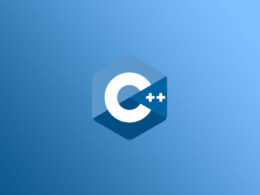Golang’s Growing Use: What is Golang Used For?

In the digital tapestry of modern programming, a language surfaces with the allure of speed and simplicity; Golang stands poised, reshaping the landscape of software development.
As a language sculpted by the pioneering minds at Google, Go cuts through complexity like a clean, syntactic blade, affording developers an edge in crafting robust applications, from microservices to cloud-native solutions. Delving into this article unfurls the myriad hues of Golang’s utility.
Readers shall traverse the paths of open-source programming excellence, unveiling Go’s finesse in backend services and its harmony with container orchestration systems like Kubernetes. With Go’s statically typed nature ensuring reliability, and its famed concurrency model bolstering performance, one unlocks an understanding as to why this language is pivotal in high-throughput environments.
By article’s end, the secrets of Go’s prowess in web development, system programming, and beyond will no longer be enigmas, furnishing readers with the acumen to leverage Golang in an ever-evolving job market.
Prepare to knit the threads of knowledge into an intricate understanding of Go’s role in modern tech ecosystems.
What is Golang Used For?
Golang, or Go, is used for building efficient, scalable server-side applications such as web servers, network servers, and concurrent processes. It is popular in cloud computing, microservices architectures, and DevOps due to its simplicity, performance, and excellent support for concurrency and multithreading.
| Use Case | Features | Tools/Packages | Performance | Notable Uses |
|---|---|---|---|---|
| API/Backend Services | Concurrency, simplicity | Gorilla, Gin | High, efficient routines | Docker, Kubernetes |
| Web Development | Fast HTTP performance | net/http, Buffalo | Scalable web apps | Caddy, Hugo |
| Cloud Services | Native cloud support | Terraform, Packer | Cloud-optimized | Google Cloud, AWS SDK |
| Networking | Robust networking stack | gRPC, net | High network throughput | Telecommunication tools |
| Command Line Tools | Cross-platform binaries | cobra, urfave/cli | Low resource consumption | Git LFS, etcdctl |
Key Features and Design of Go

Language Characteristics
Ever wondered what Golang is used for? Let’s break it down with its language characteristics.
Think of Golang, or Go, as a super-efficient tool in a web designer’s kit. It’s designed with simplicity and power, making it a go-to for pros and beginners alike.
Static Typing and Memory Safety
First up, static typing. This is like having a meticulous blueprint for your project. It means every piece of data is clearly labeled.
No surprises, no mix-ups. Plus, with memory safety, Go keeps things tight and avoids common coding pitfalls like memory leaks. It’s like having an auto-check feature while you code!
Garbage Collection and Structural Typing
Then there’s garbage collection. Imagine a self-cleaning workspace. That’s what Go offers. It automatically frees up memory, keeping your coding environment neat and efficient.
And structural typing? It’s about flexibility. Go doesn’t get hung up on names. If two structures have the same shape, Go treats them as compatible. It’s like using universal parts in building different models – super handy!
Concurrency Model
Now, onto the star feature – concurrency. This is where Go really shines and shows what is Golang used for in multitasking environments.
Goroutines for Efficient Multitasking
Think of Goroutines as ultra-lightweight threads. They’re like having a bunch of nimble assistants who can handle multiple tasks simultaneously without breaking a sweat.
This means your applications can do more, faster, and smoother.
Built-in Support for Concurrent Programming
And the best part? Go comes with built-in support for this. It’s like having an advanced toolkit specifically for handling multiple tasks at once.
This feature is a game-changer, especially when dealing with real-time applications, networked systems, or any scenario where juggling multiple tasks efficiently is key.
So, there you have it. Golang‘s design and features make it a robust, efficient, and versatile language for a wide range of applications.
It’s no wonder it’s become a favorite in the tech world. From its static typing and memory safety to its unparalleled concurrency model, Go stands out as a powerful tool for modern programming challenges.
Advantages of Using Go
Ever caught yourself thinking, “Hey, what is Golang used for and why do folks keep raving about it?” Well, strap in! We’re about to explore the cool advantages of using Go.
Performance and Efficiency
Fast Compilation and Execution
Picture this: You’ve got a giant jigsaw puzzle, right? Now, what if it could sort itself out in a snap? That’s Go with its fast compilation.
It turns code into action so quickly, it feels like magic. And when it comes to execution, Go is like a sprinter – quick, efficient, and gets the job done without huffing and puffing.
Efficient Handling of Multithreading and Concurrency
And talk about juggling! Go handles multithreading like a pro, smoothly managing multiple tasks without a hitch.
Its concurrency model is a showstopper. Think of having a squad of skilled acrobats, each doing their own thing in perfect harmony.
That’s Go, making sure everything runs smooth and steady.
Simplicity and Ease of Learning
Minimalist Syntax with Less Than 30 Keywords
Now, let’s chat about simplicity. Go’s like your favorite easy-to-read book. It doesn’t bombard you with complex phrases.
With less than 30 keywords, it keeps things neat and clean. This minimalist approach isn’t just easy on the eyes; it makes learning and coding way more chill.
Easy to Pick Up for Those Familiar with Programming
If you’ve dabbled in coding before, Go will feel like meeting an old friend. It’s friendly for those already in the coding world, making the transition smoother than your favorite playlist.
Even if you’re coming from another programming language, Go won’t make you feel like you’re starting from scratch.
So, there you have it. Go’s like that super cool, multi-talented friend who’s also super chill and easy to hang out with.
It’s got the speed, the brains, and the brawn to handle big, complicated projects. But at the same time, it’s laid back and easy to get along with, especially if you’ve hung out with other programming languages before.
Practical Applications of Go
Curious about what is Golang used for in the real world? Go isn’t just another language sitting pretty in a coder’s toolbox.
It’s out there, making things happen. Let’s dive into some of its cool, practical uses.
Diverse Use Cases
Cloud-based/Server-side Applications
Ever wonder how those cloud apps run so smoothly? Chances are, Go’s at work behind the scenes. It’s like the powerhouse in cloud-based and server-side applications.
Think of it as the engine inside a sleek sports car – powerful, efficient, and reliable.
Network and Cloud Services, Web Services
And it’s not just about the cloud. Go plays a big role in networking and web services too. It’s like having a Swiss Army knife for the web.
Whether it’s building robust network systems or creating dynamic web services, Go’s got the chops to handle it.
Specific Examples
Infrastructure Tools like Kubernetes and Docker
Remember those big names like Kubernetes and Docker? Yep, Go’s their secret sauce. It’s like the brain powering these giants.
Kubernetes orchestrates containers, and Docker simplifies app deployment, both relying on Go’s efficiency and scalability.
Microservices and Data Science Applications
And then there’s the world of microservices and data science. Go is like the cool geek who makes complex things look easy.
It’s perfect for building microservices – small, focused applications that work together to create bigger systems. In data science, it speeds up computations and data processing like a pro.
So, when you ask, “What is Golang used for?” the answer is a lot! From powering cloud giants to managing networks, and from orchestrating containers to crunching data, Go is everywhere.
It’s like that one friend who’s good at everything – reliable, versatile, and always ready to tackle the next big thing.
Comparisons with Other Languages
When you’re knee-deep in the world of coding, it’s natural to ask, “Hey, what is Golang used for, and how does it stack up against other languages?”
Let’s play the comparison game and see how Go stands out in the coding playground.
Go vs. Other Popular Languages
Comparison with Python, Java, and C++
Picture a coding triathlon, with Python, Java, and C++ as the competitors. Python’s like the friendly neighbor, easy to get along with, great for beginners. Java?
The corporate favorite, running the show in big enterprises. C++? The old-school champ, powerful but a bit complex.
Now enter Go. It’s like the cool new athlete with a balance of strength, speed, and simplicity.
Compared to Python, Go brings more speed to the table. Against Java, it offers a simpler, more efficient approach to coding. And when up against C++, Go shines with its ease of learning and modern design.
Unique Advantages Over Traditional Languages
Simplicity and Speed
What makes Go the talk of the town? Its simplicity and speed. It’s like having a sleek sports car that’s also a breeze to drive.
You don’t need to be a pro racer to handle it, yet it still zooms ahead of the pack.
Modern Concurrency Model
And the concurrency model? It’s Go’s secret weapon. Unlike the older languages, where handling multiple tasks can get hair-pulling complex, Go makes it as easy as streaming your favorite playlist. It’s built for today’s needs – where doing multiple things at once isn’t just nice, it’s necessary.
So, if you’re ever pondering over what is Golang used for and why it’s catching on, think of it as the modern coder’s Swiss Army knife.
It’s straightforward, fast, and built with the future in mind – qualities that make it stand out in the crowded world of programming languages.
The Growing Popularity of Go
So, we’ve been talking a lot about what Golang is used for, right? But let’s switch gears and look at why this language is gaining fans faster than a viral dance move.
Industry Adoption
Increasing Use in Open-source and Private Projects
It’s making waves in both open-source projects and private sectors. Why?
Because it’s like the multi-instrumentalist of programming languages – versatile, efficient, and super reliable.
Preferred for Scalable, Cloud-based Servers
Especially in the cloud scene, Go is the main act. It’s like the DJ spinning tracks that keep the cloud parties going – scalable, powerful, and just perfect for those massive, cloud-based servers.
Community and Learning Resources
Vibrant Online Community
Now, imagine a buzzing online forum, filled with coders sharing tips, tricks, and cool Go hacks. That’s the Go community for you.
It’s vibrant, supportive, and growing every day. For anyone diving into Go, it’s like finding a treasure trove of knowledge and camaraderie.
Availability of Tutorials, Guides, and Interactive Resources
And the learning resources? Think of them as your personal Go tutors. There’s a plethora of tutorials, guides, and interactive resources out there.
Whether you’re a newbie or looking to level up your Go skills, there’s something for everyone.
So, when someone asks, “What is Golang used for?” it’s not just about its capabilities. It’s also about how it’s sparking a movement in the coding world. Go’s not just a language; it’s a community, a resource hub, and a catalyst for innovation.
Limitations and Considerations
Challenges and Limitations
Less Descriptive Than Some Languages
First off, Go’s simplicity is its superpower, but sometimes, it’s like texting with emojis only.
Sure, it’s quick and easy, but occasionally, you miss the nuance of a full sentence.
Some developers find Go a bit too straightforward for complex concepts, kinda like trying to explain quantum physics using only stick figures.
Potential Issues with Older Platforms
Then, there’s the thing about old platforms. Imagine trying to play the latest 3D game on a vintage arcade machine.
Sometimes, Go might not jive well with older systems. It’s built for the modern era, so older tech might need some coaxing to get along with it.
Hiring and Skill Requirements
Skills to Look for in Go Developers
If you’re looking to bring a Go guru into your team, it’s like scouting for a multi-talented musician.
You need someone who’s not just good with Go’s syntax but also gets its concurrency model and is comfortable with cloud computing and networking. It’s a tall order, but hey, the best ones always are.
Regional Variations in Developer Availability and Cost
And remember, just like your favorite band might not tour your city, Go developers aren’t evenly spread out everywhere.
In some places, they’re like finding a four-leaf clover, rare and prized. This means availability and cost can vary a lot depending on where you are.
FAQ On What Golang Is Used For
Why is Golang favored in server-side programming?
Golang thrives in server-side programming; its efficiency is unmatched. It scales beautifully, directly aligning with the needs of backend systems.
The simplicity of its concurrency model, with goroutines and channels, empowers developers to build high-performing server applications without the usual complexity.
What makes Golang suitable for microservices architecture?
The composition of Golang, being both static and compiled, suits the granular nature of microservices. Golang’s runtime efficiency and lightweight binaries are a boon for microservices, which demand nimbleness and modularity.
It gels well with container technologies, like Docker, enhancing deployment processes.
Can Golang be used for frontend web development?
While Golang stands as a titan in the backend realm, its role in frontend is limited. It’s the server-side where Go flexes its muscles, offering fast and scalable web services. However, with projects like GopherJS, developers can transpile Go code to JavaScript for frontend tasks.
How does Golang’s performance compare to Python or Java?
Golang outshines in performance, thanks to being a compiled language. It runs closer to the metal than Python and avoids Java’s JVM overhead. Go’s efficient memory management and its approach to concurrency means it often leaves Python and Java in the wake of its execution speed.
Do major companies use Golang in their tech stacks?
Absolutely, Google itself, Uber, and Twitch showcase Golang in their tech stacks. Its ascendancy in the tech echelons is due to its capabilities in handling complex, high-throughput applications and microservices with grace, scalability, and robustness.
Is Golang easy to learn for beginners?
Golang welcomes beginners with its clean syntax and minimalistic design. Its standard library is a treasure trove, full of rich features, yet it doesn’t overwhelm. This back-to-basics approach reduces the learning curve, easing developers into mastering its powerful features.
What is Golang typically used for in cloud computing?
In the expanses of cloud computing, Golang shines. Its compatibility with modern paradigms like cloud-native development and microservices makes it a strong contender for building cloud applications. Go is also favored in creating RESTful APIs, which are pivotal in cloud services.
How does Golang handle concurrency?
Golang’s handling of concurrency is almost artistic. With goroutines, akin to lightweight threads, and channels for communication, Go achieves concurrent tasks elegantly. The result? Applications that are efficient and easier to understand than their traditional threaded counterparts.
What kind of applications is Golang unsuitable for?
Golang excels in many fields but it’s not the panacea for all. Given its server-side strength, its use in heavy computational tasks, or desktop GUI applications might not leverage its full potential. Such scenarios often benefit from more specialized languages and frameworks.
Will learning Golang benefit my career as a developer?
The trajectory of Golang in the tech industry suggests a bright future. Its role in modern software development is expanding. As Go carves its niche, especially in backend services and cloud infrastructure, developers proficient in this language are likely to find themselves in high demand.
Conclusion
We’ve spun through the digital cosmos, where the question, what is Golang used for, shapes entire galaxies of code. This journey’s epitaph writes itself in the stars: Go, a language charting the course for efficient backend services, unearthing the potential of microservices, and steering the ship of cloud-native development with a disciplined hand on the tiller.
- Server-side Programming: A domain where Go’s scalability and performance are beyond reproach.
- Containerization: Embraced in environments where Docker and Kubernetes reign.
- High-Throughput Systems: A natural habitat for Go, where concurrency models flourish.
The realities are etched clear and deep: mastering Go places a keystone into the architecture of any developer’s skill set. It’s not just about understanding a language; it’s about embracing an ecosystem where speed is the currency and simplicity, the law of the land. Dive into Go, and code becomes an odyssey, one that charts ever-bold, new courses in the ever-expanding universe of programming.
- Exploring Beyond Java: Top JVM Languages to Learn - May 18, 2024
- Explore Knowledge: Community Q&A Apps Like Quora - May 17, 2024
- Verifying Digital Ads Using Residential Proxies to Avoid Fraud - May 17, 2024








